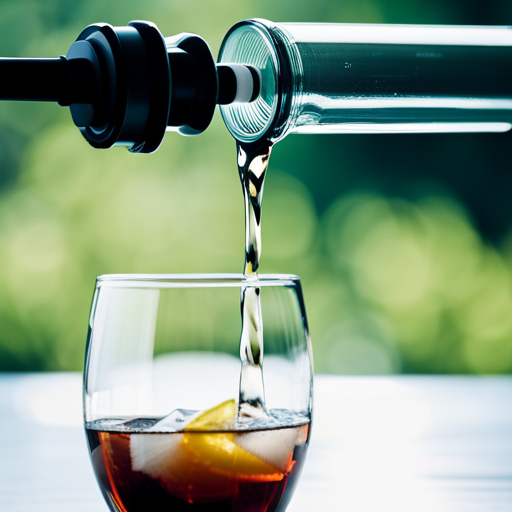Are you concerned about the quality of the water you drink? Do you want a reliable way to ensure pure, clean drinking water for you and your family?
Look no further than Kinetico Reverse Osmosis (RO) filters. These filters are known for their ability to purify up to 500 gallons of water before needing replacement, making them a popular choice for households looking for a long-lasting solution.
In this article, ‘Pure Water, Pure Life: Kinetico RO Filter Guide,’ we’ll explore everything you need to know about these filters. From their lifespan to factors that can affect their performance, we’ll give you all the information you need to ensure clean, healthy drinking water for your home.
So, let’s dive in and discover how Kinetico RO filters can help you enjoy pure water and a pure life.
Key Takeaways
– Kinetico RO filters provide pure, clean drinking water for households and should be replaced every 8 to 12 months.
– Regular maintenance and monitoring of water quality are essential for optimal filter performance.
– Factors such as high levels of contaminants, sediment, hard water, and natural minerals can affect the filter lifespan.
– Responsible disposal of used filters and sustainability efforts should be taken into consideration. Kinetico offers a recycling program for used filters.
Filter Lifespan
You can expect your Kinetico Reverse Osmosis filters to last anywhere from 6 months to a little over a year, depending on the quality of your water supply, before needing replacement to ensure pure water.
It’s important to keep up with filter maintenance to ensure that your drinking water remains clean and safe. Slow or stopped water flow is an indication that your filters are at full capacity and need to be replaced.
If you’re experiencing issues with your filters, don’t worry, there are troubleshooting tips available to help you. The PureMometer is a great tool to use to monitor your filters’ capacity and it will inform you when it’s time to change them.
By paying attention to the blue gauge on the PureMometer, you can determine your filter capacity and make sure you’re replacing them at the appropriate time.
Remember, clean water leads to longer filter life and impure water consumption can be harmful to your health.
Factors Affecting Lifespan
Factors such as the quality of your water supply and regular maintenance of your RO unit can significantly impact the lifespan of your filters. If your water supply contains high levels of contaminants, such as heavy metals or sediment, your filters may need to be replaced more frequently. Similarly, if you don’t regularly clean and maintain your RO unit, your filters may become clogged and need to be replaced sooner than expected.
Water quality is a crucial factor in determining the lifespan of your Kinetico RO filters. If you have hard water or live in an area with high levels of natural minerals, your filters may need to be replaced more frequently. Additionally, if you don’t regularly maintain your RO unit, your filters may become clogged with sediment and other debris, reducing their overall effectiveness.
To ensure the longest possible lifespan for your filters, it’s essential to maintain a regular maintenance routine and keep an eye on your water quality.
Filter Replacement Guide
To ensure optimal performance of your reverse osmosis system, it’s important to replace your filters regularly based on the table provided in the comprehensive guide. Replacement frequency varies depending on usage and household size, but on average, Kinetico RO filters should be changed every 8 to 12 months.
Failing to replace filters on time can result in impurities in your drinking water. Bad filters can even lead to no water production or high levels of chlorine.
Common mistakes when it comes to filter replacement include ignoring the PureMometer and assuming that slow water flow is due to clogged pipes rather than full filters. Troubleshooting tips include checking the PureMometer regularly, as well as checking for leaks and ensuring that all connections are tightened.
Additionally, environmental impact and sustainability efforts should be taken into consideration when disposing of used filters. Kinetico offers a recycling program for used filters, making it easy for homeowners to dispose of them responsibly.
By following the filter replacement guide and taking these factors into consideration, you can ensure that your Kinetico RO system is operating at peak performance while also minimizing your impact on the environment.
Conclusion
So, there you have it – everything you need to know about Kinetico RO filters and how to ensure pure drinking water.
The lifespan of these filters can vary depending on various factors, including water quality and usage, but on average, they can purify up to 500 gallons of water before replacement.
Remember to keep an eye on the quality of your water and any changes in taste or odor, as this may indicate that it’s time to replace your filter.
By following the filter replacement guide and ensuring regular maintenance, you can enjoy clean, pure water for you and your family.
Cheers to a healthier, hydrated life!
